24 Hours Hotline: +8613735411378
Email:[email protected]
24 Hours Hotline: +8613735411378
Email:[email protected]
Chengdu, the capital of Sichuan Province in southwestern China, is a vibrant city that perfectly blends the ancient with the modern. While it is best known for being the home of the world’s beloved giant pandas, Chengdu offers so much more than just wildlife encounters. From high-end hotels and exclusive dining experiences to private tours of its historic sites and natural wonders, Chengdu has become one of China’s most sought-after luxury travel destinations.
Get Ready for a Chengdu Adventure: Handpicked Experiences for Every Traveler!
Let us show you the true Chengdu!
Step into a city full of contrast and beauty. From ancient Buddhist temples to modern art galleries, from peaceful parks to lively street food markets, Chengdu is a place where tradition and innovation meet. Our carefully crafted tours offer an immersive experience, guiding you to the best sights, tastiest bites, and hidden gems. Whether you’re a foodie, a culture enthusiast, or just looking to relax, we’ve got the perfect tour waiting for you.
Why Chengdu is the Ultimate Luxury Destination?
1. Rich Cultural Heritage with Modern Luxury: Chengdu seamlessly blends ancient traditions with modern luxury, offering a unique cultural and upscale experience.
2. Home to Exclusive 5-Star Hotels and Resorts: The city boasts world-class luxury hotels, providing top-tier service and sophistication for discerning travelers.
3. Unmatched Culinary Delights: Chengdu is a foodie paradise, with Michelin-starred restaurants and exclusive dining experiences that showcase its bold Sichuan cuisine.
4. VIP Access to Chengdu’s Most Iconic Experiences: Luxury travelers can enjoy private tours of iconic Chengdu attractions like the panda base and historical landmarks.
5. Wellness and Relaxation in Style: Chengdu offers world-class spas and wellness centers, perfect for rejuvenating in luxurious, tranquil settings.
6. Luxury Shopping and Fashion: The city’s upscale malls and boutiques offer exclusive shopping experiences with top international brands.
7. Stunning Natural Beauty: From serene mountain retreats to private helicopter tours, Chengdu’s natural landscapes provide a breathtaking backdrop for luxury adventures.
Top Luxury Experiences in Chengdu
A. Ultra-Luxury Accommodations: Opulent Retreats
1. Chengdu Research Base of Giant Panda Breeding
A world-renowned panda breeding center dedicated to the conservation of giant pandas. The base offers the opportunity to see pandas at various stages of their life.
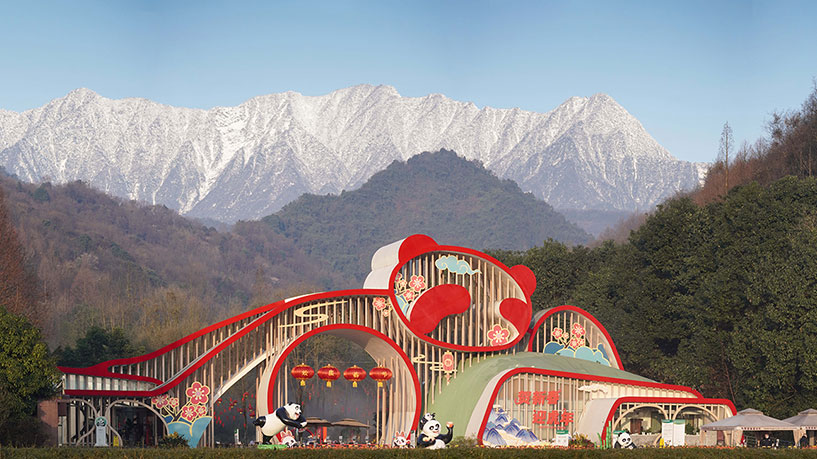
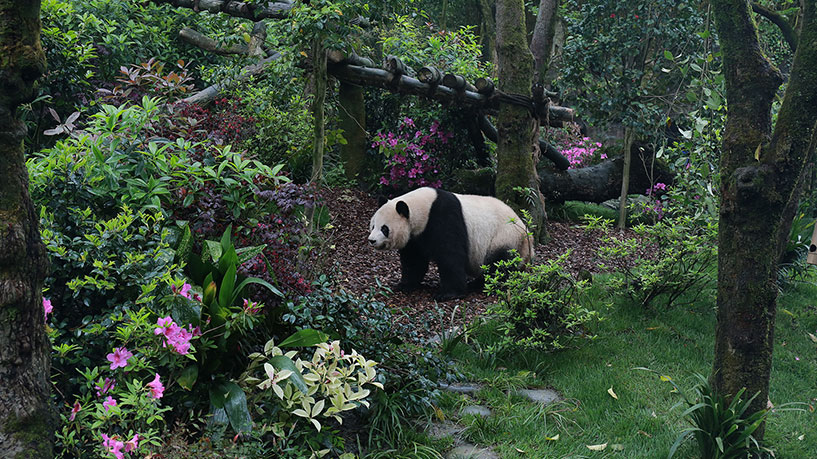
Address: No. 1375, North Panda Avenue, Chenghua District, Chengdu, Sichuan, China
Phone: +86-28-83510033
Opening hours:
· From November to February: Morning admission at 8:00-12:00; Afternoon admission at 12:00-16:30 (closed at 17:30)
· From March to October: Morning admission at 7:30-12:00; Afternoon admission at 12:00-17:00 (closed at 18:00)
Highlights:
· See panda cubs and adults in a naturalistic setting.
· Participate in panda volunteer programs (e.g., feeding, cleaning enclosures).
· Educational exhibitions on panda conservation.
Transportation:
· “Metro + Bus” Route:
Take Metro Line 3 to Chengdu Junqu General Hospital Station and exit at Exit B. Then Walk 280 meters to the bus stop. Transfer to Shuttle Bus 409 to reach the West Gate (about 10-min drive). Or transfer to Bus 110/659 to reach the West Gate.
Another way is take Metro Line 3 to Panda Avenue Station and exit at Exit A. Then Transfer to Shuttle Bus 408 to reach the South Gate. Take Metro Line 3 to Zoo Station and exit. Or Transfer to Bus 655/87 to reach the South Gate.
· Scenic Area Direct Bus (Direct Bus): Direct route to popular scenic areas in the downtown area: There are dedicated buses to attractions like Chunxi Road, and Kuanzhai Alleys.
Inquiry Method: Follow the public platforms.
WeChat Mini Program: Scenic Area Direct Bus|Chengdu Bus APP
Public Account: Chengdu Tourism & Sightseeing Bus
Website: https://www.panda.org.cn/en/
2. Ya’an Bifengxia Base
Situated in the mountains of Ya'an, this panda base offers a more serene experience surrounded by nature.

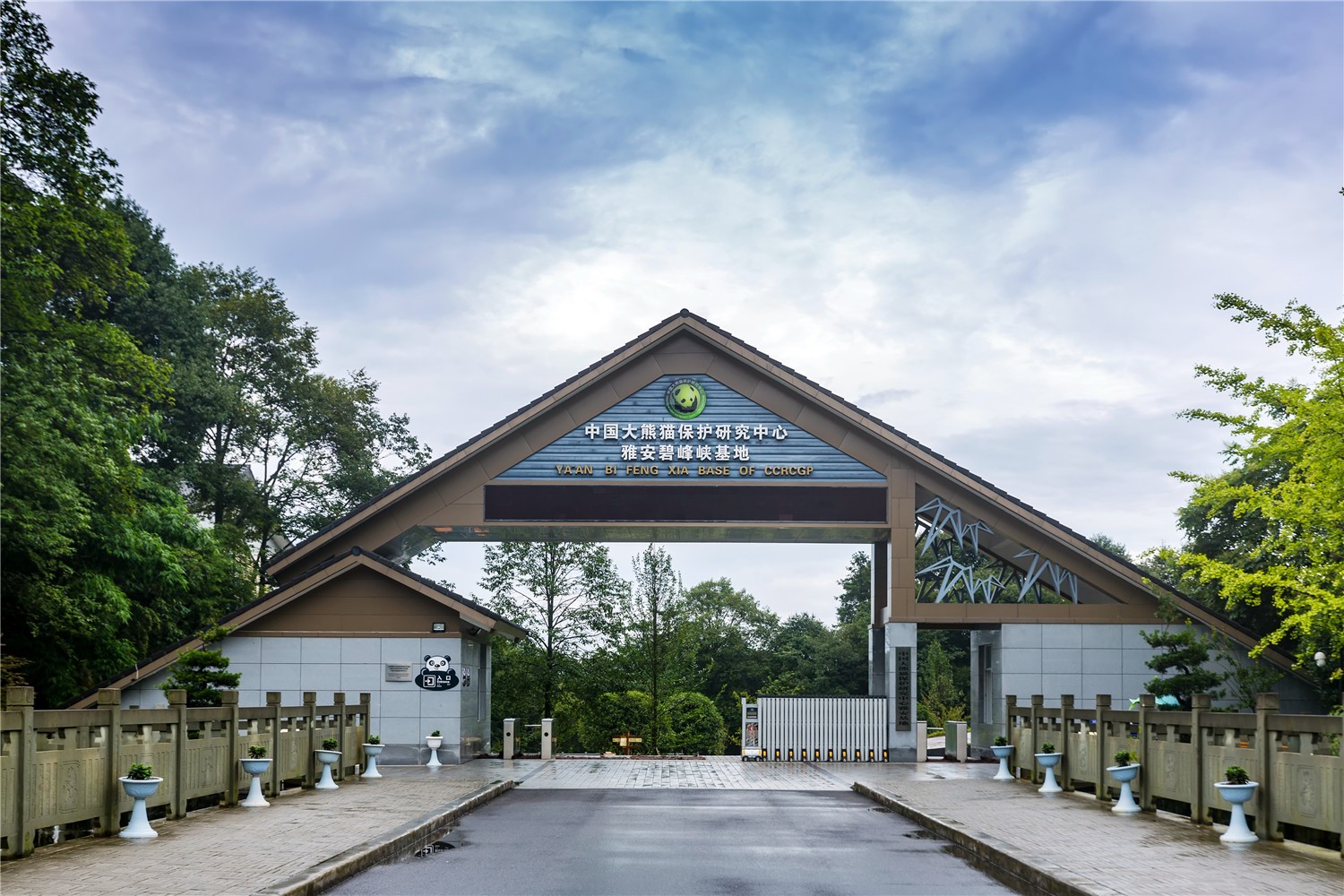
Address: Bifeng Gorges Scenic Resort, Yucheng District, Ya'an, Sichuan, China
Phone: +86-835-2318091
Opening hours: 9:00 AM-4:00 PM
Highlights:
· Unique opportunity to see pandas in a less touristy setting.
· Scenic surroundings with trekking trails.
· Visitors can also participate in the “Panda Keeper” program.
Transportation:
· Buses:
Passenger Bus Stations in Chengdu: You can take a long-distance passenger bus to Bifengxia from the following stations: Xinnanmen Bus Station or Shiyangchang Bus Station
Ticket price: Approximately 46 yuan.
· Car: You can take the Chengdu-Ya'an Expressway (Chengya Expressway), which has a toll fee of approximately 51 yuan. Alternatively, you can take the Chengdu-Wenjiang-Qionglai Expressway (Chengwenqiong Expressway), with a toll fee of approximately 37 yuan for vehicles registered in Chengdu and about 57 yuan for vehicles from other regions. It is recommended to exit at the Ya'an North Exit, then turn left onto Yabi Road towards Bifengxia Scenic Area. The distance is about 12 kilometers, and the drive will take approximately 20 minutes.
· From Ya'an to Bifengxia Scenic Area: At Ya'an North Second Road (formerly the Tourist Bus Station), take a special yellow minibus to Bifengxia Scenic Area. The ticket price is 6 yuan.
· Train: High-speed trains depart from Chengdu West Station, Chengdu South Station, and Chengdu East Station to Ya'an, with about 43 train departures daily.
· Returning to Chengdu from Bifengxia: Take a dedicated Bifengxia to Ya'an shuttle bus to North Second Road. From there, you can catch buses to either Xinnanmen Bus Station or Shiyangchang Bus Station in Chengdu. Buses depart every 30 minutes. Alternatively, you can also catch a bus at Ya'an Bus Station or Ya'an Train Station.
Distance from Chengdu: The Bifengxia Scenic Area is located 12 kilometers north of Ya'an and about 128 kilometers from Chengdu, with a driving time of approximately 90 minutes.
Website: http://www.bifengxia.com/
3. Wolong China Giant Panda Garden Shenshuping Base of CCRCGP
One of the earliest and most important conservation centers for pandas, located in the Sichuan province.
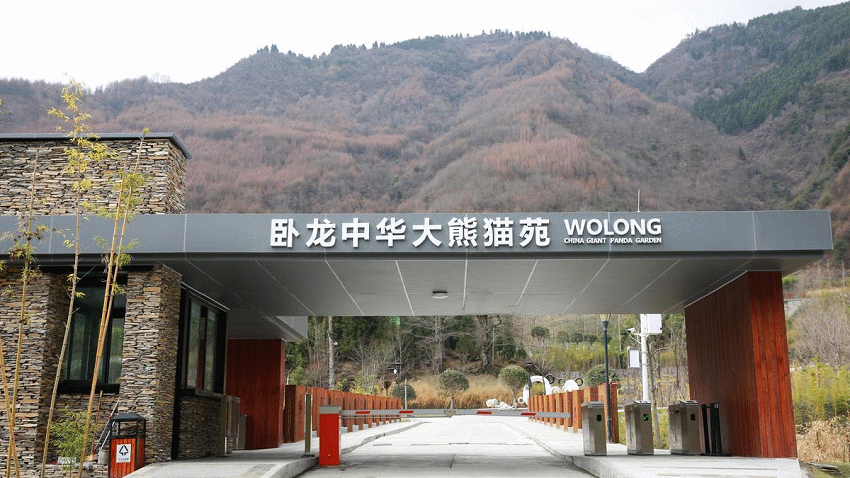

Address: 28 Xingfu Avenue, Gengda Town, Wolong Special District, Aba Prefecture., Sichuan, China
Phone: +86-837-6984864
Opening hours: 9:00 AM–5:00 PM (Admission ends at: 4:30 PM; Tickets available until: 4: 30 PM)
Highlights:
· Scenic nature reserve with a rich ecosystem.
· Learn about panda research and protection efforts.
· Panda rescue center for sick or injured pandas.
Transportation:
· Buses: From Chengdu Chadianzi Bus Station, you can take a bus to Dujiangyan Bus Station. There is a bus from Dujiangyan Bus Station to Gengda that departs at 3:00 PM every day. The bus ride takes about one hour. After getting off, walk uphill for about 20 minutes towards the direction of the sign to reach the destination.
· Car: The driving route from Chengdu to Gengda Township takes about 2 hours and covers a distance of approximately 105 kilometers. Start by driving on the Chengguan Expressway towards Dujiangyan, then continue on the Duwen Expressway to Yingxiu Town. From there, take Provincial Road 303 to Gengda Township. Alternatively, you can search for the "China Giant Panda Protection and Research Center Gengda Shenshuping Base" in your navigation system for easier guidance.
Distance from Chengdu: The Wolong Nature Reserve is located in Wenchuan County, Aba Prefecture, approximately 120 kilometers from Chengdu and more than 50 kilometers from Dujiangyan.
Website: http://www.wolongpanda.vip/
4. Dujiangyan Panda Base (formerly known as Panda Paradise)
China's Giant Panda Conservation Research Center, Dujiangyan Base (also known as Panda Paradise) is located in Daguan Town, Dujiangyan City. At the base there are numerous charming, silly pandas along with sprawling lawns and bamboo forests, full of fresh air. This is a great place to have fun and see cute giant pandas, but also a great please to grow in knowledge and broaden your horizons.
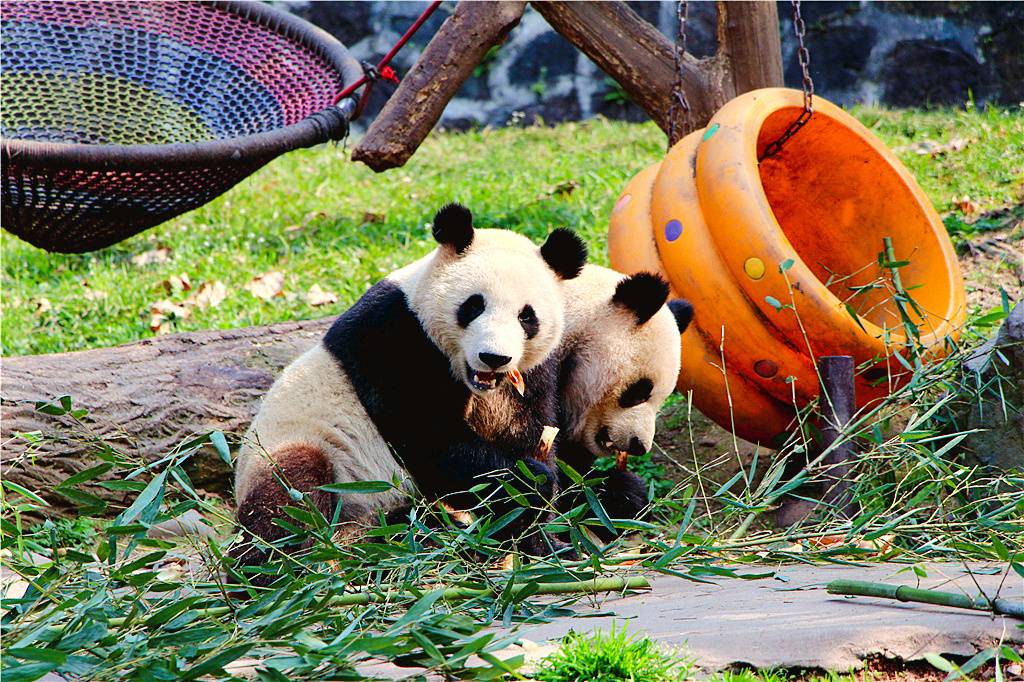
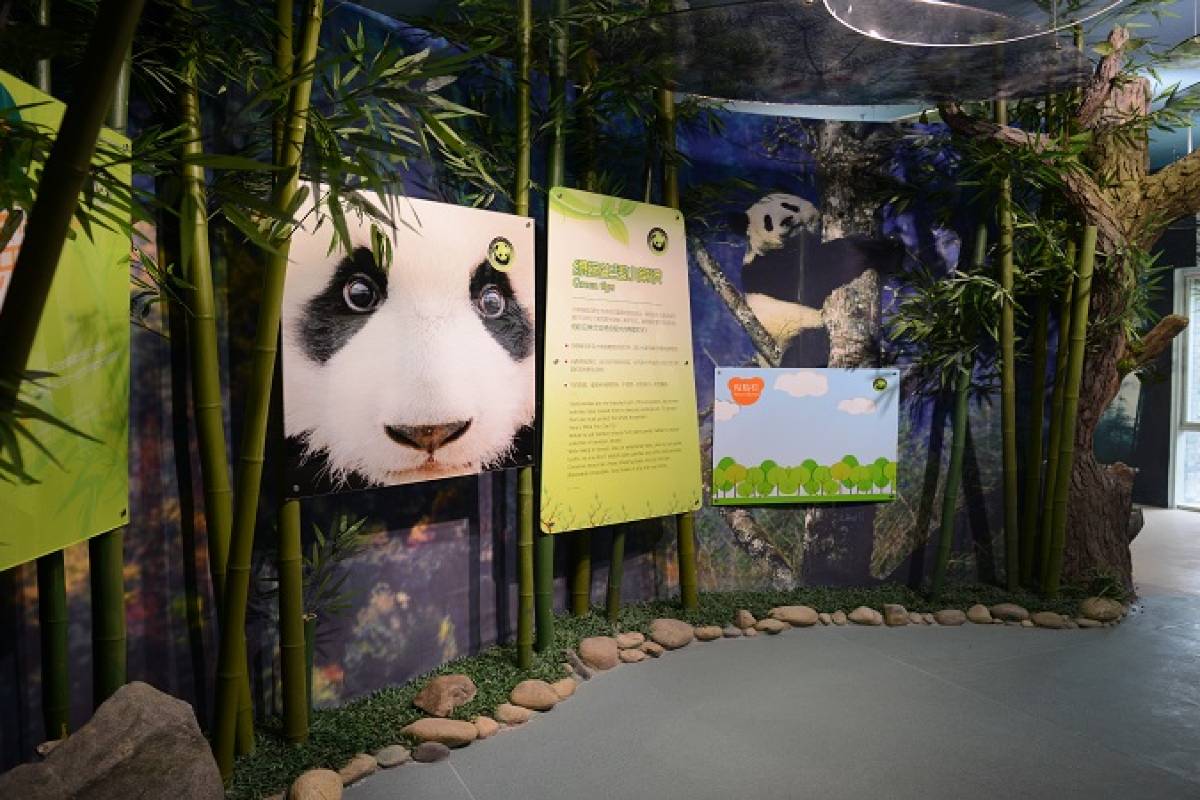
Address: Guanyinyuan, Dujiangyan City, Chengdu (between Qingchengshan Town and Daguan Town, Huaizhong Road), Sichuan, China
Phone: +86-19136072640
Opening hours: 8:30 AM–5:00 PM(Admission ends at:4:30 PM)
Highlights:
· Nestled in a picturesque mountainous area with lush forests and a tranquil environment perfect for pandas.
· Educational programs and interactive exhibits on panda research, conservation efforts, and the importance of biodiversity.
· Close encounters with pandas in a naturalistic setting, with opportunities to see pandas of various ages, from cubs to adults.
· Panda volunteer program available for visitors wanting to help with feeding and cleaning panda enclosures (advance booking required).
Transportation:
· Buses: Starting from Chengdu Chadianzi Bus Station, take a bus to Dujiangyan Bus Station. From there, take Bus 102 (towards Jiezi Ancient Town) and get off at the Panda Paradise Station.
· Car: Drive on the Chengguan Expressway, then take the road to Chongyi and Huai Zhong Road to Panda Paradise. Alternatively, you can search for "China Giant Panda Protection and Research Center Dujiangyan Base" on your navigation system.
· High-Speed Train: Starting from Chengdu North Railway Station, take the high-speed train to Qingchengshan Railway Station. From there, take Bus 102 (towards Jiezi Ancient Town) and get off at the Panda Paradise Station.
Distance from Chengdu: It is located 18 kilometers from the city center, with the Taoist sacred site Qingcheng Mountain to the north and the ancient town of Jiezi to the south. Provincial Road S106 (the Western Sichuan Tourism Loop) connects these areas.
Website: https://www.panda.org.cn/en/pandavalley/tour/
5. Mianyang Panda Base (Newly Opened in 2025)
Situated in Gulou Mountain Ecological Park, Mianyang Science and Technology City New Area, the Mianyang Panda Base is the latest facility under the China Conservation and Research Center for the Giant Panda (CCRCGP), entering trial operation in November 2025. Covering an area of 120 hectares, it features 54 panda enclosures and a dedicated Disease Control and Rescue Area. Positioned as a comprehensive conservation base in the northern section of Giant Panda National Park, it plays a key role in supporting the protection of giant panda populations in the Minshan Area and advancing related scientific research and technological development.
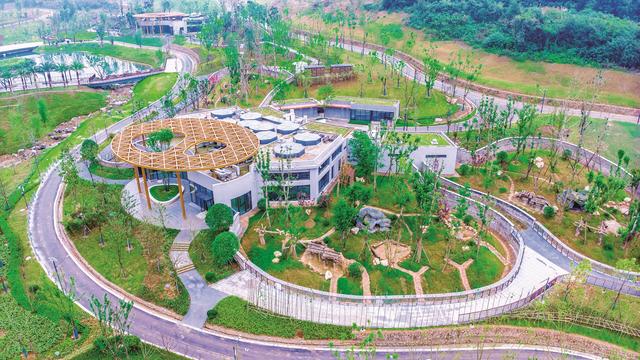
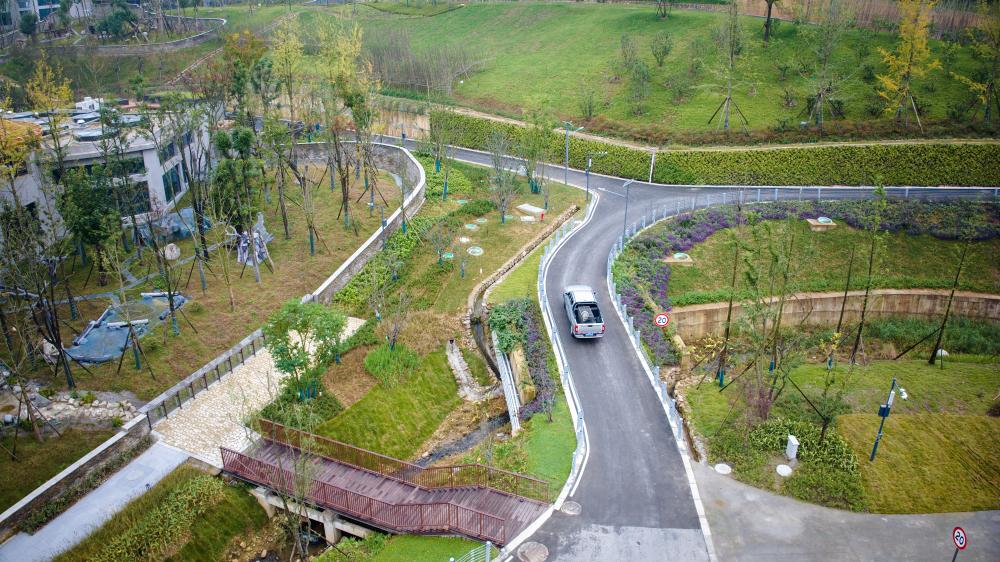
Address: Gulou Mountain Ecological Park, Science and Technology City New Area, Mianyang, Sichuan, China
Opening hours: The base is currently closed to the general public as the pandas undergo a critical adaptation period under professional observation and care. The base will gradually open to the public in 2026 after the adaptation period concludes. According to official sources, the tentative full opening is scheduled for January 2026 . However, specific dates and ticketing details will be announced via the China Conservation and Research Center for the Giant Panda (CCRCGP) official channels.
Highlights:
· Officially launched trial operation in November 2025, serving as the newest flagship base of CCRCGP with large-scale and advanced facilities.
· Spans 120 hectares of ecological land, equipped with 54 well-designed enclosures and a professional Disease Control and Rescue Area to meet multi-age panda care needs.
· Functions as a core support for Minshan Area panda conservation, integrating population management, scientific research, and technological innovation.
· Houses an initial group of 13 giant pandas (including cubs, sub-adults, and elderly individuals), with plans to gradually open to the public in phases.
Transportation:
· “High-Speed Train + Bus” Route: Take a high-speed train from Chengdu East Railway Station to Mianyang Station (30–40 minutes, frequent departures daily). From Mianyang Station, transfer to a dedicated shuttle bus (No. 901) to "Gulou Mountain Ecological Park Station" (30 minutes, operates every 40 minutes from 8:00 to 17:00). Alternatively, take a taxi from Mianyang Station directly to the base (about 25 minutes, fare around 30–40 RMB).
· Car: Take the Chengdu-Mianyang Expressway (G5 Beijing-Kunming Expressway) eastward, exit at "Mianyang Science and Technology City New Area" toll gate, then follow the directional signs to "Gulou Mountain Ecological Park" for about 10 minutes.
Distance from Chengdu: Approximately 120 km, with a travel time of 1.5–2 hours.
Website: https://www.panda.org.cn/
The five major bases of the Panda Center complement each other in their functions:
· Wolong Shenshuping and Hetaoping focus on breeding and rewilding,
· Dujiangyan specializes in disease prevention and rescue,
· Bifengxia in Ya'an is responsible for international exchanges and public education,
· The Mianyang base strengthens regional conservation and the integration of technology.
Through this strategic layout, the Panda Center has established a comprehensive life-cycle conservation network, covering everything from "breeding - rewilding - release - monitoring" to "disease prevention - public education," providing a "Chinese solution" for global biodiversity conservation.
Discover Chengdu’s Best Kept Secrets: Curated Tours for the Adventurous Traveler!
Unveil the secrets of Chengdu!
Our guided tours will take you beyond the typical tourist trail, unveiling the city’s hidden gems and local favorites. From ancient temples to quiet tea gardens, from Sichuan cooking classes to visits to local art hubs, our tours give you a deep dive into the soul of Chengdu. With personalized itineraries and expert insights, you’ll see the city like never before—full of surprises and unforgettable moments.
2. Other provinces: Regional protection and display
1. Foping Rescue and Breeding Base (Hanzhong, Shaanxi)
Located in Shawo Village, Changjiaoba Town, Foping County, the Foping Rescue and Breeding Base is a core facility dedicated to the conservation of Qinling giant pandas. As a professional institution focusing on rescue, treatment, and artificial breeding of Qinling giant pandas, it plays a vital role in protecting the unique subspecies of giant pandas in the Qinling Mountains. Currently housing 4 giant pandas, the base integrates scientific research with ecological protection, while collaborating with nearby scenic spots to promote eco-tourism.
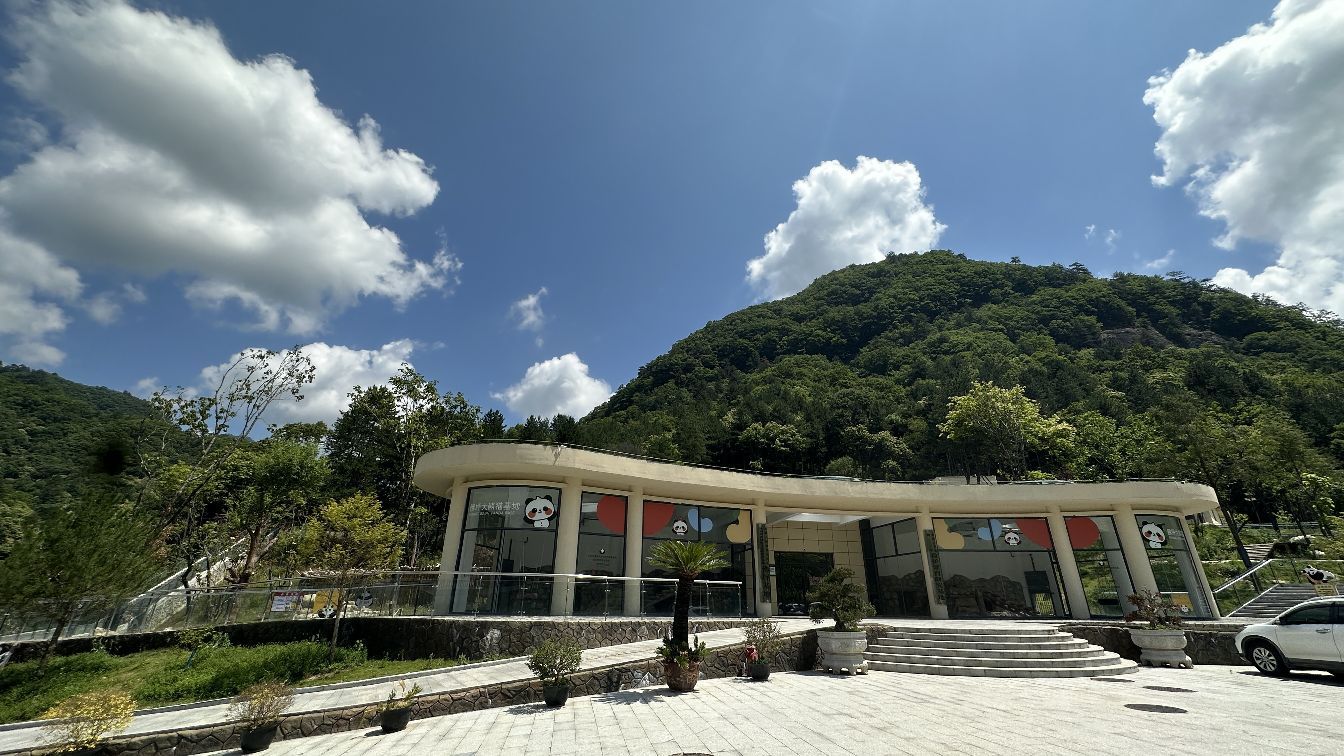
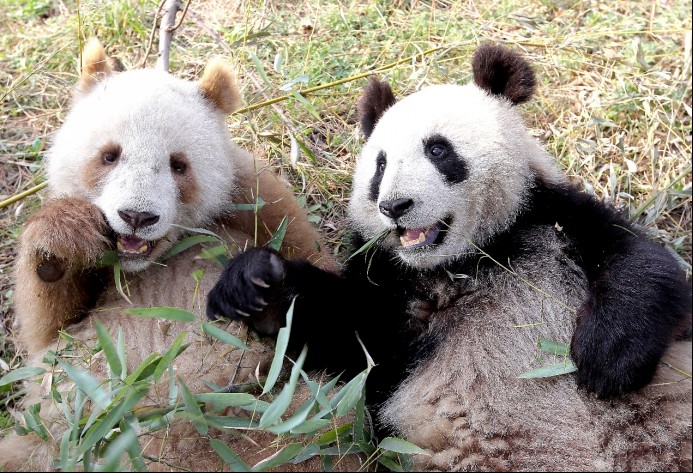
Address: 60 meters east of Yaoguang Pool, Sha Wo Village, Changjiao Ba Town, Foping County, Hanzhong, Shaanxi, China
Opening hours: 9:00 AM–4:30 PM (last entry at 16:00), closed on Mondays (except public holidays).
Highlights:
· Specializes in rescuing injured, sick, or abandoned wild Qinling giant pandas, providing professional medical treatment and rehabilitation training.
· Undertakes artificial breeding programs to maintain the genetic diversity of the Qinling giant panda population.
· Houses a small but precious group of 4 giant pandas, allowing visitors to observe the unique characteristics of Qinling pandas (e.g., smaller size and rounder faces).
· Forms a seamless eco-tourism network with Foping Panda Valley and Taibai Mountain National Forest Park, offering in-depth nature exploration experiences.
· The Qinling giant pandas are known for their unique coat color, referred to as the Qinling color pattern. This rare characteristic has only been observed in the Qinling Mountain region, where a total of 10 brown giant pandas have been recorded throughout the country.
Transportation:
· From Xi’an: Take a high-speed train from Xi’an North Railway Station to Foping Station (2.5–3 hours), then transfer to a county bus or taxi to the base (30 minutes, fare around 20–30 RMB).
· From Hanzhong: Drive via the Hanzhong-Foping Expressway (1.5–2 hours) or take a long-distance bus from Hanzhong Bus Station to Foping County (2.5 hours), followed by local transportation to the base.
· Car: Navigate to "Foping Giant Panda Rescue and Breeding Base" directly, with well-maintained mountain roads and parking facilities available.
2. Chongqing Zoo
Located at No. 1 Xijiao Village, Yangjiaping, Jiulongpo District, Chongqing Zoo is one of China’s oldest and most renowned zoos, renowned for its large giant panda population. Home to 23 giant pandas, it ranks among the zoos with the highest number of captive pandas in China. The Panda House, built in the 1960s, has been renovated and upgraded over the years to provide a comfortable habitat for pandas while offering visitors excellent viewing opportunities.

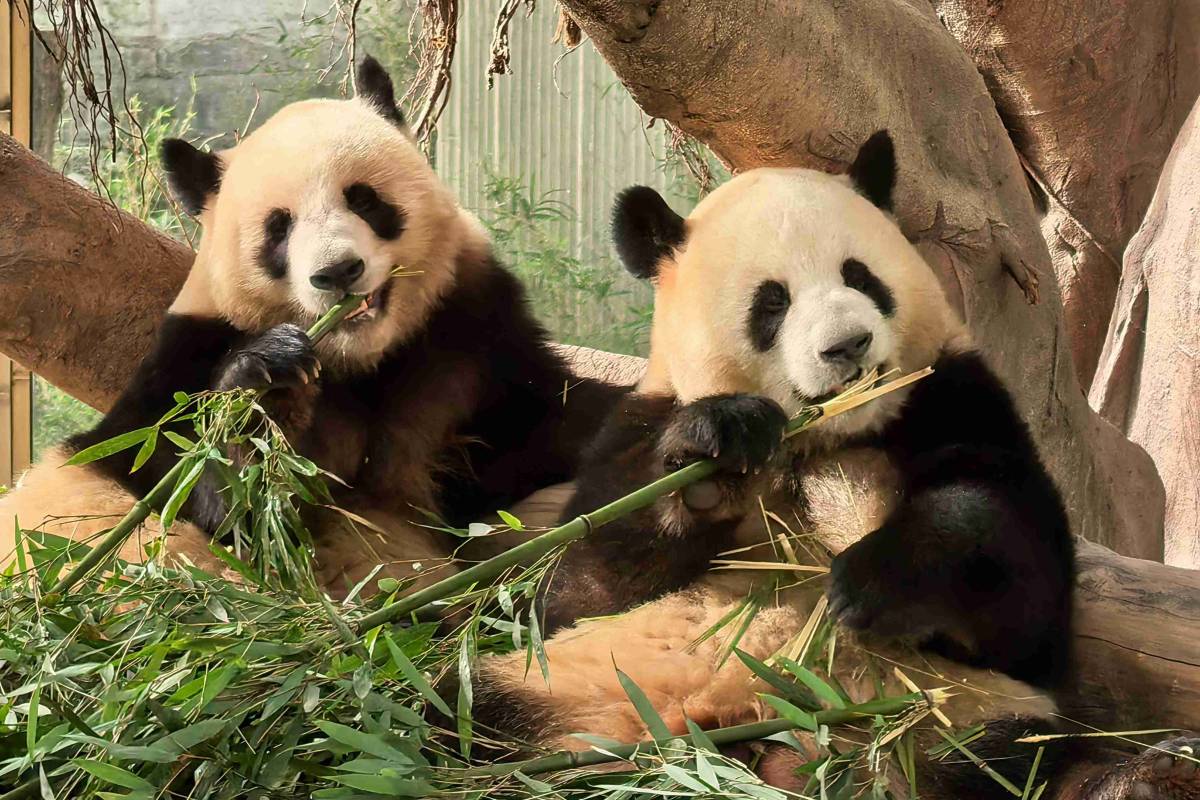
Address: No. 1 West Village, Jiulongpo District (near Xijiao Branch Road), Chongqing, China
Phone: +86-23-63817001
Opening hours:
· May 1–Sep 30 every year: 7:30 AM–4:30 PM
· Every year from Oct 1 to Apr 30 of the following year: 8:00 AM–4:30 PM
Highlights:
· Boasts a stable population of 23 giant pandas, including cubs, adults, and elderly individuals, making it a top destination for panda enthusiasts in southwest China.
· The historic Panda House, with a history of over 60 years, features spacious enclosures, naturalistic landscapes, and transparent viewing windows for up-close observation.
· Pandas are most active during feeding times (9:00 AM and 3:00 PM), when visitors can witness their feeding, playing, and climbing behaviors.
· Combines panda viewing with other wildlife exhibits (e.g., tigers, elephants, monkeys) and lush greenery, suitable for family outings and leisure visits.
Transportation:
· Metro:
Route 1: Take Metro Line 2 then exit at Zoo Station, Exit 1, then walk along Xijiao Road to reach the East Gate 2 of Chongqing Zoo.
Route 2: Take Metro Line 2 then exit at Yangjiaping Station, Exit 1, then walk along Xijiao Road and Xijiao Branch Road to reach the East Gate 1 of Chongqing Zoo.
· Buses:
Route 1: Take bus 1200, 1265, 148, 204, 207, 229, 275, 310, 341, 362, 413, 416, 419, 420, 426, 428, 454, 471, 475, 478, 822, or the Xipeng-Maoxianggou Special Line to the Zoo Station, then walk along Xijiao Road to reach East Gate 2 of Chongqing Zoo.
Route 2: Take bus 1265, 148, 204, 207, 229, 265, 275, 298, 310, 341, 362, 413, 416, 419, 420, 426, 428, 454, 471, 475, 478, 481, 822, or the Xipeng-Maoxianggou Special Line to Yangjiaping Xijiao Station, then walk along Xijiao Branch Road to reach East Gate 1 of Chongqing Zoo.
Website: http://www.cqzoo.com/cqzoo/index.html?_t=1762500763460
3. Guangzhou Chimelong Safari Park
Situated in Panyu District, Guangzhou, Chimelong Safari Park is the largest ex situ conservation base for giant pandas in South China. Unlike traditional zoos, it integrates panda conservation with a safari-style environment, allowing pandas to live in large, naturalistic habitats that mimic their wild homes. The park showcases the harmonious coexistence between giant pandas and other wildlife, making it a unique ecological tourism destination in the Pearl River Delta.


Address: No. 1 West Village, Jiulongpo District (near Xijiao Branch Road), Chongqing, China
Phone: +86-23-63817001
Opening hours: 9:30 AM-6:00 PM
Highlights:
· Serves as the largest ex situ conservation center for giant pandas in South China, housing a healthy and growing panda population.
· Panda enclosures are designed as semi-wild habitats with dense forests, bamboo groves, and natural water bodies, replicating the pandas’ native ecological environment.
· Integrates panda viewing with safari experiences (e.g., driving through African savanna areas, walking through primate zones), offering a comprehensive wildlife experience.
· Features interactive popular science exhibits and educational activities, such as panda conservation lectures and bamboo-planting workshops, suitable for students and families.
Transportation: For more details, please visit the official website.
Website: https://www.chimelong.com/gz/safaripark/
Comparison of four giant panda viewing hot spots
| Items | Chengdu Research Base of Giant Panda Breeding | Ya’an Bifengxia Base | Dujiangyan Panda Base | Wolong Panda Base |
| Location | Urban area of Chengdu, with the most convenient transportation | Suburban area of Ya'an, about 2.5~3 hours from the urban area | Dujiangyan, about 1.5 hours from the urban area | Wolong, Wenchuan County, about 2.5~3 hours from Chengdu urban area, mountainous environment |
| Number of Pandas | Plenty, covering everything from cubs to adults | Plenty, scattered in multiple parks | Relatively few, mainly adult and elderly pandas | Plenty, including a mix of cubs and adults |
| Celebrity Pandas | Huahua, Yuanmeng, Little Prince (returnee from France) | No specific celebrity pandas, but large in number | Meilan, Oreo, Zhenxiong | Famous pandas like Fubao, Xiaoqiji, and more |
| Crowds | Crowded on holidays, requiring queuing | Relatively few tourists | Few people, quiet and secluded | Fewer crowds, Moderate, fewer than Chengdu Base, comfortable visiting experience |
| Shooting Distance | About 5-15 meters | Depends on different panda areas | Some can be shot at close range | Moderate to close, depending on panda activity areas |
| Environmental Atmosphere | Urban-type zoo | Large ecological park integrated with canyon scenery | Natural valley park | Natural mountain habitat, simulating pandas’ original living environment |
| Additional Activities | Panda Museum, Pedestrian Street | Bifengxia Canyon, Zoo | Qingcheng Mountain, Dujiangyan Scenic Area | Visit panda research facilities, hiking, Wolong Nature Reserve exploration |
| Target Audience | First-time visitors to Chengdu with limited time | Ecotourists, in-depth travelers | Those who enjoy tranquility and photography enthusiasts | Panda conservation enthusiasts, scientific research interested visitors, in-depth travelers |
| Recommended Stay Duration | Half a day ~ 1 day | 1 or 2 days | 1 day | 1~2 days |
Fun facts about giant pandas
1. Giant pandas are not cats
Giant pandas belong to the order Carnivora, the bear family, the subfamily Ailuropodinae, and the genus Ailuropoda, making them the only species in this genus.
2. Nearsighted
Giant pandas have an excellent sense of smell and hearing, but their vision is poor. They are essentially "nearsighted," with a vision correction equivalent to around 800 degrees.
3. The "Sixth Finger"
To help grip bamboo, giant pandas have evolved a "sixth finger," also known as a "pseudo-thumb."
4. Waddle walk
Giant pandas walk in a slow, "duck-footed" style with their feet turned inward. This movement helps conserve energy, which is necessary because bamboo is a low-energy food.
5. Poop experts
To get the nutrition they need, pandas eat quickly and eliminate waste just as fast. They can defecate up to 40 times a day!
6. Short mating season
Female giant pandas only go into estrus once a year, and their fertility window lasts just 2 to 3 days. This brief mating period is one reason for the panda’s low reproduction rate.
Panda Watching Tips & Insider Information
1. Best Time to Visit
Giant pandas live in dense bamboo forests at an altitude of 2,600 to 3,500 meters, where the annual temperature is below 20?. They prefer cold and are afraid of heat. When the weather is cool, giant pandas will be active in outdoor activity areas. When the outdoor temperature rises above 26?, they will return indoors to escape the heat and their activity levels will decrease. The best seasons to visit are spring, autumn and winter.
2. Volunteering Opportunities
Many panda bases offer volunteer programs, such as feeding and cleaning the panda enclosures. This is a once-in-a-lifetime chance to interact with pandas, though programs can book up months in advance. However, due to the giant panda being a first-class protected species and for safety reasons, official regulations now prohibit volunteers from having close physical contact with the pandas. Volunteers can still participate in meaningful activities, such as preparing food for the pandas and assisting with other tasks that help care for them.
3. Photography Tips
Pandas tend to move slowly and are often resting, making them great subjects for photography. Use a telephoto lens to capture close-up shots without disturbing them. Keep your distance and avoid flash photography to respect their space.
4. Sustainable Travel
Choose eco-friendly tours that support the conservation of pandas. Be mindful of the environment, respect wildlife guidelines, and avoid littering.
5.What to Wear
If visiting panda reserves in mountainous areas, wear comfortable hiking shoes and light, breathable clothing. Weather in the mountains can vary, so bring a light jacket just in case.
From majestic pandas and stunning natural reserves to rich cultural landmarks and scenic beauty, China is a paradise for panda enthusiasts. Whether you're visiting world-renowned conservation centers, trekking through lush forests, or learning about panda research, there’s no shortage of unforgettable experiences for wildlife lovers. Don’t miss the chance to witness these incredible creatures in their natural habitats—your ultimate panda adventure in China awaits!
Your Way Holiday’s Curated Unforgettable Panda Viewing Experiences in China
We design private and tailor-made Chengdu tours customized to your travel style at affordable local prices. You’ll enjoy the comfort of a private, spacious car and the company of a professional local guide with over 5 years of experience, dedicated exclusively to you or your group. From transportation and tickets to authentic dining experiences (we always recommend the dishes most loved by locals), everything will be arranged according to your preferences. Please take a look at some of our most popular Chengdu tours below:
Not exactly what you’re looking for? Don’t worry — all of our Chengdu tours can be fully customized based on your interests, schedule, and budget. We specialize in creating unique Chengdu experiences that go beyond the guidebook, giving you the chance to truly connect with the local culture and people. Our enthusiastic tour experts are always ready to provide detailed suggestions and will respond to your inquiry within 24 hours. Ready to explore Chengdu your way? Contact us today and let us design a Chengdu shopping experience that fits your style. Your Way Holiday looks forward to your message! We're ready to design an unforgettable Chengdu trip for you anytime.
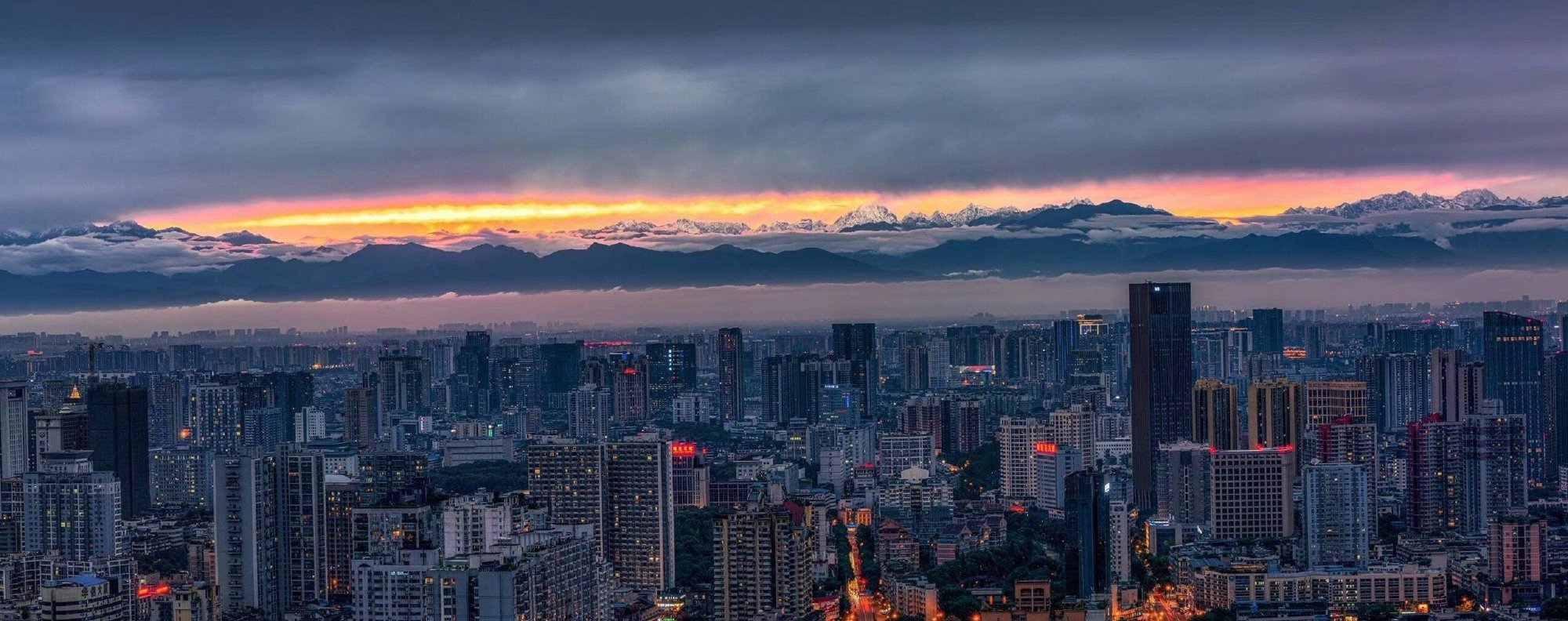
Overview
Early history
Archaeological discoveries at the Sanxingdui and Jinsha sites have established that the area surrounding Chengdu was inhabited over four thousand years ago. At the time of China's Xia, Shang, and Zhou dynasties, it represented a separate ancient bronze-wielding culture which—following its partial sinification—became known to the Chinese as Shu. In the early 4th century bc, the ninth king of Shu's Kaiming dynasty relocated from nearby Pi County, giving his new capital the name Chengdu. Shu was conquered by Qin in 316 bc and the settlement refounded by the Qin general Zhang Yi. (A Chinese legend explains the town's nickname "Turtle City" by claiming Zhang planned the course of his city walls by following a turtle's tracks.) Although he had argued against the invasion, the settlement thrived and the additional resources from Sichuan helped enable the First Emperor of Qin to unify the Warring States which had succeeded the Zhou.
Imperial era
Under the Han, the brocade produced at Chengdu became fashionable and was exported throughout China. A "Brocade Official" (??, jinguan) was established to oversee its quality and supply. After the fall of the Eastern Han, Liu Bei ruled Shu, the southwestern of the Three Kingdoms, from Chengdu. His minister Zhuge Liang called the area the "Land of Abundance". Under the Tang, Chengdu was considered the second most prosperous city in China after Yangzhou. Both Li Bai and Du Fu lived in the city. Li Bai praised it as "lying above the empyrean". The city's present Caotang ("Grass Hall") was constructed in 1078 in honor of an earlier, more humble structure of that name erected by Du Fu in 760, the second year of his 4-year stay. The Taoist Qingyang Gong ("Green Goat Temple") was built in the 9th century.
Chengdu was the capital of Wang Jian's Former Shu from 907 to 925, when it was conquered by the Later Han. The Later Shu was founded by Meng Zhixiang in 934, with its capital at Chengdu. Its King Mengchang beautified the city by ordering hibiscus to be planted upon the city walls.
The Song conquered the city in 965 and used it for the introduction of the first widely used paper money in the world. Su Shi praised it as "the southwestern metropolis". At the fall of the Song, a rebel leader set up a short-lived kingdom known as Great Shu (??, Dàshu). The Mongols sacked Chengdu in 1279 with a general slaughter that Horner estimated at over a million. During their Yuan dynasty, Marco Polo visited Chengdu and wrote about the Anshun Bridge or an earlier version of it.
At the fall of the Ming, the rebel Zhang Xianzhong established his Great Western Kingdom (??) with its capital at Chengdu; it lasted only from 1643 to 1646. Zhang was said to have massacred large number of people in Chengdu and throughout Sichuan. In any case, Chengdu was said to have become a virtual ghost town frequented by tigers and the depopulation of Sichuan necessitated the resettlement of millions of people from other provinces during the Qing dynasty. Following the Columbian Exchange, the Chengdu Plain became one of China's principal sources of tobacco. Pi County was considered to have the highest quality in Sichuan, which was the center of the country's cigar and cigarette production, the rest of the country long continuing to consume snuff instead.
Modern era
In 1911, Chengdu's branch of the Railway Protection Movement helped trigger the Wuchang Uprising, which led to the Xinhai Revolution that overthrew the Qing dynasty.

During World War II, the capital city of China was forced to move inland from Nanjing to Wuhan in 1937 and from Wuhan to Chengdu, then from Chengdu to Chongqing in 1938, as the Kuomintang (KMT) government under Generalissimo Chiang Kai-shek ultimately retreated to Sichuan to escape from the invading Japanese forces. They brought with them into Sichuan business people, workers and academics, who founded many of the industries and cultural institutions which continue to make Chengdu an important cultural and commercial production center. Chengdu had become a military center for the KMT to regroup in the War of Resistance, and while out of reach of the Imperial Japanese ground forces and escort fighter planes, the then highly advanced twin-engine long-ranged G3M "Nell" medium bombers were routinely flown in to conduct massive aerial bombardments of both civilian and military targets in Chongqing and Chengdu; the massed formation of the G3M bombers provided heavy firepower against Chinese fighter planes assigned to the defense of Chongqing and Chengdu, which continued to cause problems for the Japanese attacks. However, in late 1940, unbeknownst to the Americans and European allies, the Imperial Japanese appeared in the skies over Chongqing and Chengdu with the world's most advanced fighter plane at the time: the A6M "Zero" fighter that dominated the skies over China against the increasingly obsolete Russian-made Polikarpov I-15/I-153s and I-16s that were the principal fighter planes of the Chinese Nationalist Air Force; that which would later prove to be a rude awakening for the Allied forces in the Pacific War following the attack on Pearl Harbor. One of the first American ace fighter pilots of the war and volunteer for the Chinese Nationalist Air Force, Major Wong Sun-shui (nicknamed "Buffalo" by his comrades) died as a result of battling the Zero fighters in defense of Chengdu on 14 March 1941.
In 1944, the American XX Bomber Command launched Operation Matterhorn, an ambitious plan to base B-29 Superfortresses in Chengdu and strategically bomb the Japanese Home Islands. The Operating base was located in Xinjin Airport in the southwestern part of the Chengdu metropolitan area. Because the operation required a massive airlift of fuel and supplies over the Himalayas, it was not a significant military success, but it did earn Chengdu the distinction of launching the first serious retaliation against the Japanese homeland.
During the Chinese Civil War, Chengdu was the last city on the Chinese mainland to be held by the Kuomintang. President Chiang Kai-shek and his son Chiang Ching-kuo directed the defence of the city from Chengdu Central Military Academy until 1949, when the city fell into Communist hands. The People's Liberation Army took the city without any resistance after a deal was negotiated between the People's Liberation Army and the commander of the KMT Army guarding the city. On 10 December the remnants of the Nationalist Chinese government evacuated to Taiwan.
The industrial base is very broad, including light and heavy manufacturing, aluminum smelting and chemicals. The textile industry remains important, with cotton and wool milling added to the traditional manufacturing of silk brocade and satin.

Chengdu is the headquarters of the Chengdu Military Region. Until the end of the year 2015, due to the revocation of military reform in Chengdu, West Theater is founded and Headquarter is stationed in Chengdu.
The Chengdu Tianfu District Great City is a sustainable planned city that will be outside of Central Chengdu, and is expected to be completely built later in the decade. The city is also planned to be self-sustaining, with every residence being a two-minute walk from a park.
Prev: No previous link
Next: Weather in Chengdu: A Complete Year-Round Guide to Climate & Travel Tips
Wechat: Chinaprivatetour
24 Hours Hotline:
+8613735411378
1 to 1 tailor-made service from our professional travel advisors for the most sophisticated
Constantly excellent reviews for attraction, hotel and service Competitive price
Local experts provide quality tours Best selected knowledgeable local guides Authentic local restaurants
7*24 hours available to create you a worry-free tour. No Hidden Fees and absolutely no pressure to buy. Secured







